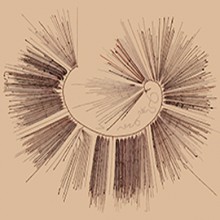Quipu: Counting with knots in the Inka Empire – 2003
- Record-keeping with knots
- The quipu and writing
- Tawantinsuyu , the Inka Empire
- The Quipu, and the needs of an empire
- Quipus and tribute
- Basic parts of a Quipu
- Making a Quipu
- Quipus and numerical values
- Narrative Quipus?
- Los distintos usos del Quipu
- Quipu of Arica
- Quipucamayoc , Lord of the Knots
- Quipus in the colonial era
- Epilogue
- To know more about Quipus
- Crédits and acknowledgements
Narrative Quipus?
About one-third of the quipus recovered to date do not comply with the customary numerical registration system principles, whether due to having different knots or not respecting the decimal number arrangement in their places of value. In addition, these quipus exhibit other characteristics that apparently are not part of the numerical system that has been deciphered thus far. These divergences, together with early historical accounts of these devices, suggest that some quipus may have served to register something more than just quantities, such as other types of categories, and even narratives.
The spin and ply directionality of the strings (“ZS” or “SZ”), the orientation in which the Pendant Strings were attached to the Primary Cord (obverse and reverse), and knot directionality (right or left) made it possible to store information in a binary fashion, a capability that was highly useful and suited to the dualistic and binary organization that characterized the Inka society, which normally divided each community in pairs of two-part sets, the sex of the individuals who were registered, and the seasons of the year. The color of the strings, produced by the combination of the different natural tones or dyes of the raw materials, also may have served to represent binary data, although according to information supplied by the Spanish chroniclers, it was used to encode more complex concepts. Thus, crimson was used to represent the Inka; yellow, gold; white, silver; red, warriors; and green, the dead. According to some historical accounts, the quipu may have also served to record stories, songs, poems and genealogies, meaning that it could have been a true writing system. From this perspective, the different colors added to the threads of the strings appear to have awarded the quipu a much more intricate codification system – yet to be deciphered – due largely to the effort made by the Inkas to maintain this strategic system of information storage incomprehensible to the Spanish invaders.




































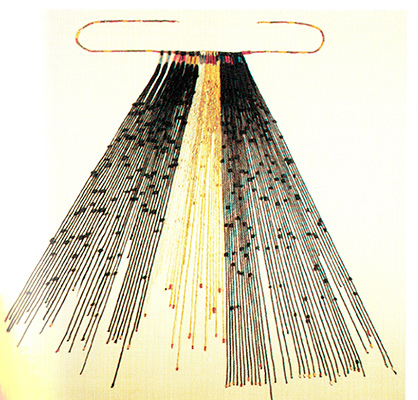
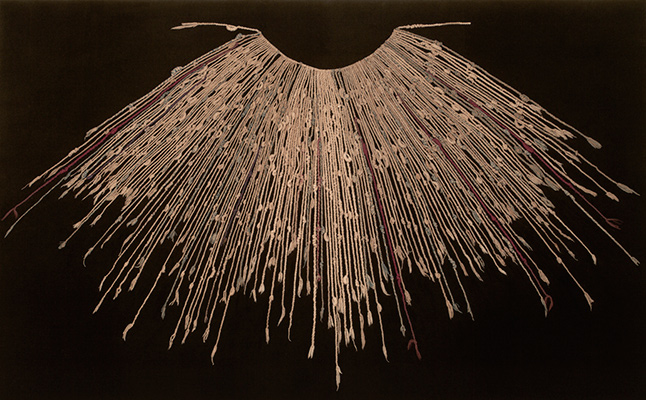
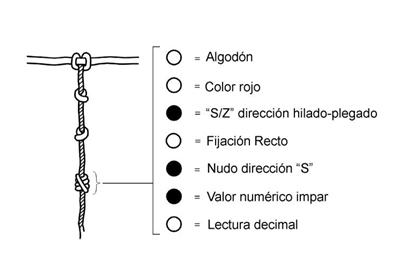
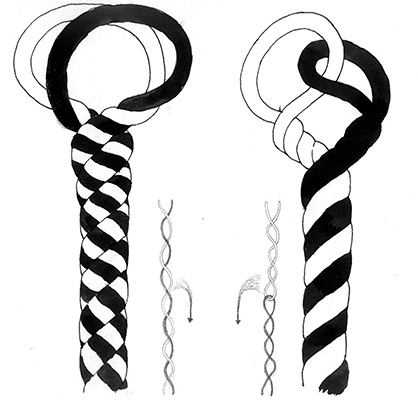
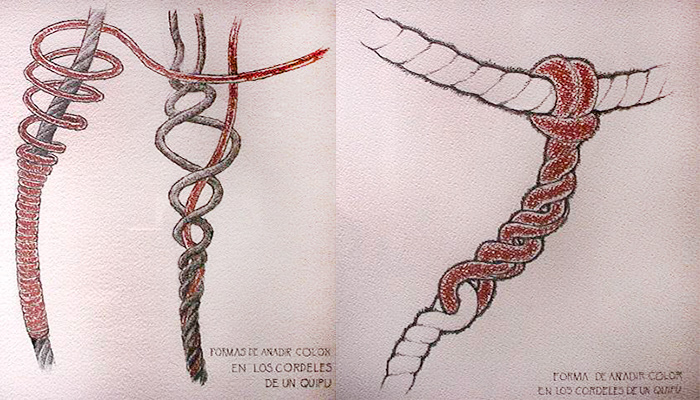
![A <em>Quipucamayoc</em> with a multicolored strings <em>quipu. </em>Drawing, from the Spanish chronicler Martín de Murúa [1590].](https://precolombino.cl/wp/wp-content/uploads/2015/11/UNIDAD-9-06-Dibujo-Murua-Quipu-de-color.jpg)
